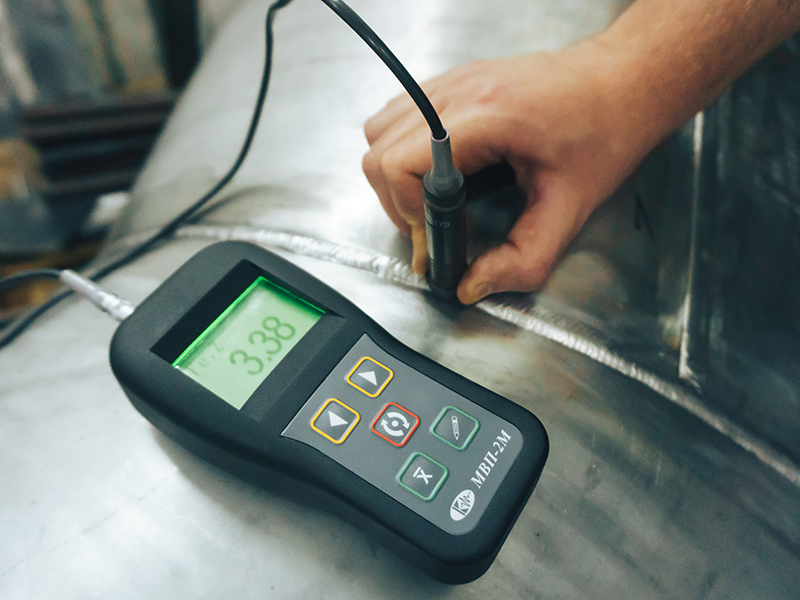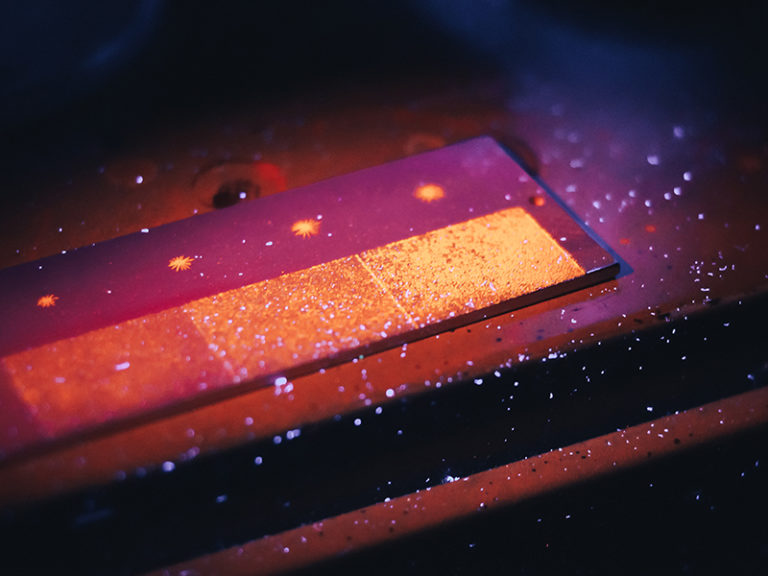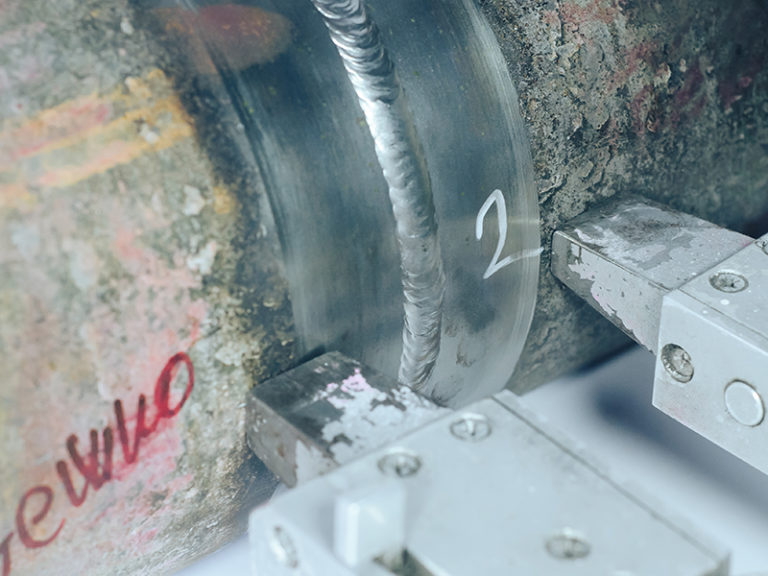Structure of chrome-nickel steel that contain chrome (8 – 25%), nickel (8 – 15%), molybdenum (<4%), and also in small numbers other elements, can be both from completely austenitic steel and contain some ferrite phase, even despite the fact that content of some elements is within limits of chemical composition. Monitoring of ferrite phase must be conducted at execution of various process steps, but the most crucial area is welding.
It is well known that presence of ferrite phase changes technological and operational properties of steel and products made of it. For example at absence of ferrite phase or at its small content, there is tendency for occurrence of hot cracks in welded joints, while at higher indicators of the ferrite phase one can observe trend towards reduction of ductility and impact hardness after holding at elevated temperatures (600 – 800 °С) and deterioration of corrosion resistance in some aggressive mediums.
Presence of ferrite phase can deteriorate performance indicators of steels within area of cryogenic temperatures, but positively affect them under the conditions of corrosion under voltage.
Specific aspects of Ferrite content determination
Specific character of ferrite phase impact lie in fact that comparatively minor changes of its volume (in some cases within few percent and even fraction of percent) can cause significant change of the steel properties. Requirements to change of ferrite phase are stricter than to chemical composition of steel. Thus, according to GOST 2246, ferrite phase content must be strictly within 2 – 6% in welding rod classification Св-08Х16Н8М2 & Св-08Х18Н8Г2Б and 3 – 8% in rod classification Св-04Х19Н11МЗ, but at that it is permitted to exceed content of chrome above norm provided by this standard in order to attain the required ferrite phase content. Correspondingly strict requirements are advanced to testing methods as well, since even slight inaccuracy at determination of the ferrite phase can result in fallacy at evaluation of material quality. Observance of set ferrite phase content assures the required level of process and operating properties of steel.
Regulation and testing of ferrite phase content in chrome-nickel steel of austenitic and austeno-ferritic classes are integral part of measures for quality assurance of products in many industries in Ukraine and abroad.
Ferrite phase measurement by “Center of industrial diagnostics and control” LLC
“Center of industrial diagnostics and control” LLC renders services for determination of ferrite phase content within range from 0% to 25% in products made of stainless chrome-nickel steel of austenitic and pearlite classes both at its facilities and in the territory of the customer using multifunctional eddy current device МВП-2М.








